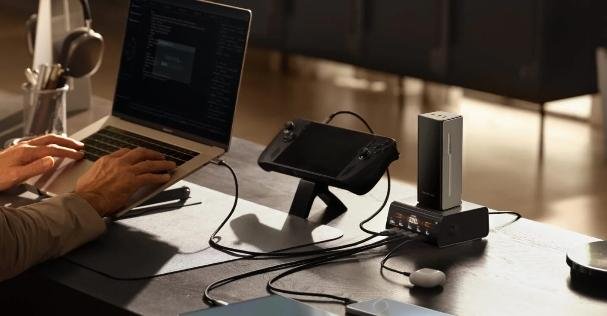When to Replace Your Power Bank?
Power banks are lifesavers when our devices run out of battery, but like all electronics, they don’t last forever. Using an old or failing power bank can be frustrating—imagine needing a quick charge only to find it barely holds any power anymore. Worse, damaged power banks can even pose safety risks, from overheating to potential battery leaks. Knowing when to replace yours ensures your devices stay charged safely and efficiently. A well-maintained power bank should reliably serve you for years, but wear and tear eventually take their toll. In this article, we’ll explore the key signs that indicate it’s time for a replacement and how to make the best decision for your needs.
Declining Performance & Battery Health
Reduced Capacity
One of the most obvious signs that your power bank needs replacing is when it no longer holds as much charge as it used to. If you used to get two full phone charges but now struggle to get even one, the battery has likely degraded significantly. Lithium-ion and lithium-polymer batteries naturally lose capacity over time due to repeated charging cycles. Testing its output with the same device and cable can help confirm whether the issue lies with the power bank. Another way to check is by monitoring how long it takes to fully recharge the power bank itself—if it charges much faster than before, that could mean its internal capacity has diminished.
Slower Charging Speed Despite Good Cables
If your power bank used to charge devices quickly but now takes noticeably longer, even with high-quality cables, this is another red flag. Aging batteries struggle to deliver consistent power output, leading to slower charging speeds. Some power banks also experience voltage drops over time, reducing their ability to fast-charge newer devices efficiently. Testing with different cables and devices can help rule out other issues, but if the slowdown persists, the power bank’s internal circuitry or battery cells may be failing.
Frequent Recharging Needed for Minimal Use
A good power bank should retain its charge for weeks when not in use. If yours drains rapidly even when idle, that’s a sign of battery deterioration. Some self-discharge is normal, but if it loses a significant percentage overnight or within days, the internal cells are likely degrading. This means you’ll have to recharge the power bank more often just to keep it usable. Another symptom is when the power bank shuts off prematurely, showing full charge one moment and dying the next. This inconsistency indicates the battery can no longer hold energy properly.
Physical Damage & Safety Risks
Swollen or Bulging Battery
A swollen battery is one of the most serious warning signs and requires immediate replacement. This happens when gas builds up inside due to chemical breakdown, often from age, overheating, or manufacturing defects. A bulging power bank may feel puffy, have a warped casing, or no longer sit flat on surfaces. Continuing to use it risks leaks, fires, or even explosions. Never attempt to puncture or repair a swollen battery—dispose of it safely at an electronics recycling center. Many retailers and manufacturers offer battery disposal services. If your power bank shows any swelling, stop using it right away and replace it with a new, high-quality model.
Cracked Casing or Exposed Wires
Physical damage, such as cracks in the outer shell or exposed wiring, compromises both functionality and safety. Even small cracks can allow moisture or dust inside, potentially damaging the internal components. Exposed wires increase the risk of short circuits, which can damage connected devices or even cause electrical hazards. If the damage is minor—like a loose port—it might be repairable, but significant structural issues usually mean replacement is the safer option.
Overheating During Use/Charging
While some warmth during charging is normal, excessive heat is a major red flag. If your power bank becomes uncomfortably hot to the touch or shuts down due to overheating, its internal safety mechanisms may be failing. Overheating can result from poor-quality cells, circuit malfunctions, or even physical damage. Continuous overheating accelerates battery wear and poses a fire hazard. If cooling the power bank down doesn’t resolve the issue, it’s best to replace it.
Outdated Technology & Compatibility Issues
Older power banks may lack modern charging standards like USB-C Power Delivery or Quick Charge, making them inefficient for newer devices. If your phone supports fast charging but your power bank doesn’t, you’re missing out on convenience. Some older models also have weaker outputs, struggling to charge power-hungry devices like tablets or laptops. Another issue is outdated ports—many newer gadgets rely on USB-C, while older power banks may only have USB-A. Carrying extra adapters is a hassle, and compatibility problems can leave you stranded without power.
When to Repair vs. Replace
Some problems, like a slightly loose charging port, might seem minor. If the power bank otherwise works well, you could attempt a DIY fix or professional repair. However, opening the casing yourself may void warranties or cause further damage. Some manufacturers offer repair services, but costs vary. Before deciding, consider the power bank’s age and overall condition. If it’s already several years old and showing other signs of wear, investing in a new one is often more cost-effective than repairing an aging device.
Conclusion
Recognizing when to replace your power bank ensures you always have reliable backup power when needed. Key signs like reduced capacity, physical damage, or overheating shouldn’t be ignored—they impact both performance and safety. For those seeking a dependable upgrade, EcoFlow’s power banks are a strong choice, known for their high-quality build, advanced safety features, and long-term reliability. With various models available, they offer a durable solution tailored to different charging needs. By replacing your power bank at the right time, you’ll keep your devices powered safely and efficiently wherever you go.
YOU MAY ALSO LIKE: The Importance of True RMS Average Power Sensors in Accurate Power Measurement











